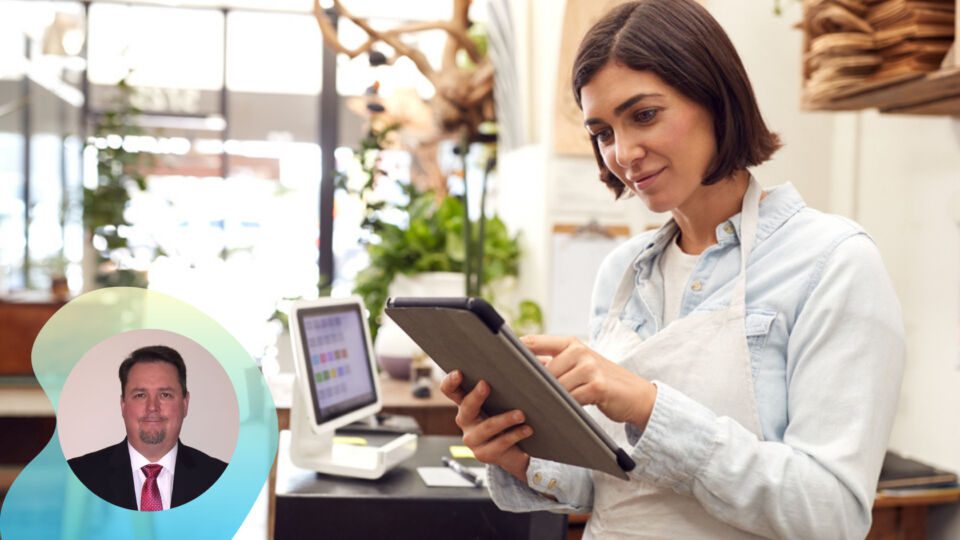COVID-19 has fundamentally disrupted retail as we know it. With re-masking and a potential fourth wave coming, we aren’t out of the woods yet, and it’s important to recognize how essential elements of retail business and operations have been forever transformed — most notably, the role of brick-and-mortar stores and the relationship between personalization and automation.
Many large retailers were quick to adapt their business models and operations over the past year, combating some of the pandemic’s disruptions to the customer shopping experience. They offered more delivery choice and flexibility and focused on online-to-offline engagement. But the lessons learned over the past year have also exacerbated how inefficient parts of the supply chain and retail industry are. Businesses are taking a closer look at overall operations costs and the increased potential for online sales, which may one day permanently diminish the role of the physical store.
The Role of the Brick-and-Mortar Store
Will physical retail stores still be essential post-pandemic? Yes. But their role is dramatically changing. Brick-and-mortar stores are becoming utilitarian. They’re the place a consumer “has to go to” because of lack of planning or for essential purposes only.
Stores are, quite simply, expensive to operate. From a logistical standpoint, every product sees a minimum of eight physical touch points between its manufacturer and the store shelf. Each time that product is touched — whether it’s moving from a warehouse or fulfillment center, being loaded onto a truck or being put on a shelf — costs money. And roughly 80% of a store’s target profit is generated by only ~20% of its stockkeeping units (SKUs).
One has to wonder what stores are doing with the other 80% of SKUs that were touched eight times on their way to the shelf space they’re occupying. Without even factoring in the expenses of operating a store — like labor, payroll and energy — it’s a model that generates waste, increases stores’ carbon footprints and places too much risk on the concept that revenue will be buoyed by in-store impulse purchases.
Looking ahead, retailers need to consider new and existing concepts, like microfulfillment centers that optimize the supply chain, drive efficiency and meet consumers’ immediate fulfillment demands. Ultimately, retailers need to pay attention to their digital services and how they intersect with customer relationship management (CRM), order management and automation. That’s the nucleus of where shopping is headed in North America.
Refining Personalization in a Digital-First World
The world continues to shift from physical offline to digital online at a dramatic pace, with increased reliance on web and social. But what’s missing from the equation is how critically important CRM and order management have become to each other. They’re symbiotic in the customer journey, and we need to make a concerted effort not to dissociate one from the other — especially by putting obstacles like a store between the two connecting points.
As personalization moves from evolution to acceleration, it’s going to be tied directly to retailers doubling down on supply chain automation. Immediate fulfillment is going to be an ever-present challenge, but the gap between buying/selling online and fulfillment is closing. I live in a rural area of Georgia, and Amazon, UPS and other contract carriers make deliveries to my neighborhood at least twice a day. If they can get to me, they can probably get to anyone.
Fulfillment is key to personalization. Even if a business does an impressive job engaging and managing the customer relationship online, if fulfillment isn’t executed properly — the wrong product is shipped, delivery is delayed, the price is listed wrong — the retailer is back to square one. That means retailers need to be equipped with processes to constantly communicate order status and be ready to pivot if a customer wants to make a change.
Many argue that customer service is often tied directly to shopping in person, and there are certainly times when an in-person dynamic is necessary. But unless you’re in a commission-based role, the true art of customer service and managing relationships has become increasingly digital and more precise. Retailers have far more control over the message and are able to generate constant, continual engagement through multiple touch points that drive new sales. In a physical retail environment, that level of engagement and follow-up is rare — and far less convenient.
Creating a blended consumer experience is key to long-term success. But more importantly, retailers need to reconsider their channel mentality and embrace the shift to a digital-first model to stay relevant and drive profitability.
Paul Burel is the Product Owner within Fujitsu America’s Digital Commerce business. He has broad experience across Fujitsu’s Commerce business including sales, marketing strategy, industry consulting and product development and support services. Prior to joining Fujitsu, Burel held several senior management roles in store operations and IT at Home Depot. He is also a consulting engineer with extensive experience in retail store design, construction and store planning. Burel comes from a family retail business that owned and operated grocery, hardware and convenience stores.




